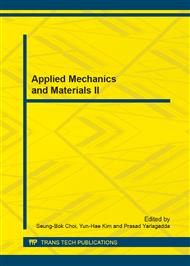p.714
p.718
p.723
p.727
p.732
p.736
p.740
p.744
p.749
Modal Parameters Identification of Civil Engineering Structures Based on the Random Decrement Technique
Abstract:
Modal identification technique is an effective measure for building materials health diagnosis, structural optimization design and safety assessment in structural engineering field. The time-domain method can only use the response signals to identify the modal parameters under ambient excitation, which became a wide concern topic in recent years. According to the points above, the theories of random decrement technique, complex exponential method and time-series method are presented. The random decrement technique is combined with the other two methods to become joint algorithms. A numerical simulation model is constructed to verify the feasibility and validity of the two joint algorithms.
Info:
Periodical:
Pages:
732-735
Citation:
Online since:
December 2013
Price:
Сopyright:
© 2014 Trans Tech Publications Ltd. All Rights Reserved
Share:
Citation:


